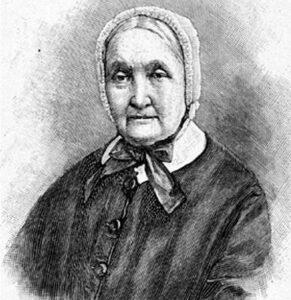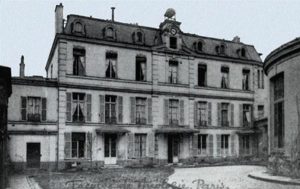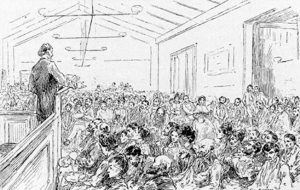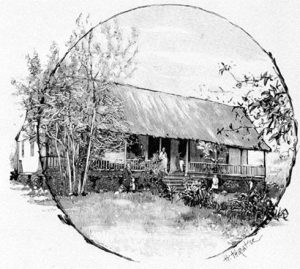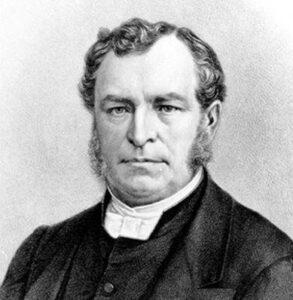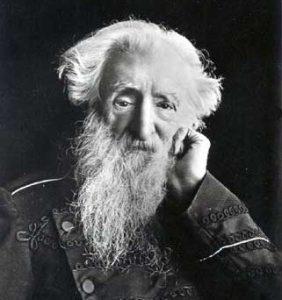The origins of the deaconesses of Reuilly
The community of the deaconesses of Reuilly came into being when the Revival, a movement of spiritual renewal and missionary zeal, was at its height. It was started by two people who were strong characters, Antoine Vermeil and Caroline Malvesin. They had met a few years before, in Bordeaux, where the former was a pastor and the latter, who was in his parish, a headmistress of a girl’s boarding school. When Vermeil was appointed pastor in Paris, he asked Caroline Malvesin to join him and his wife in the organization of charity work. In 1842, at the beginning, the institution was a hospital for children with tuberculosis and then, later the same year, a shelter for prostitutes. After that, the work consisted of helping women in prison ; not only were there regular visits, (where a little educational talk was given at the same time), but these women were also helped when they came out of prison and guided into safe networks where they would not go back to prostitution.
But parallel to this charity work to help the very poor, pastor Antoine Vermeil and Caroline Malvesin thought that the basic structure of the institution needed to be strengthened. That is when the idea of a community came about, which would bring together women who wanted to undertake a life of obedience and charity in the imitation of Christ, demonstrating “a life of unity in contrast to the division of the Churches at that time”.
How the Community was organized
The founders set out a basic list of rules before the official “Rules of the Community” were established. There were three key points :
- 1 – The utter holiness of God, which implied that anyone who wanted to consecrate his life to him had to give himself up completely to his sovereignty.
- 2 – The world was full of injustice, and this made people devote themselves entirely to those who suffered the most, in order to bring them the good news of the Gospel.
- 3 – In this way the Church would become stronger.
This rule was revised several times and it was only in 1983 that an official “Rule” was finally established, after much premeditation, it gave a real spiritual identity of its own to the community.
The protestant Churches did not take kindly to the foundation of the Community. The unconditional freedom of a believer in the eyes of God did not seem compatible with the idea of vows of poverty, obedience, celibacy or the fact that they devoted their lives entirely to God, giving up all their possessions.
But these deaconesses did not feel superior or privileged to other believers in any way because of their decision to live as nuns, in a community – this was quite different to the Catholics, who give special spiritual value to “militant christians”.
In other words, by their vows and commitment they were asserting that their baptism was the seal of God’s total, complete forgiveness and also of his saving grace.
The Community of the deaconesses soon increased in number and size, at the end of the XIXth century there were thirty nuns, while at the beginning of the XXIst century there were more than a hundred, spread out in fifteen different communities, in Europe, Africa and Polynesia, each one developing in its own way of life.
Up until the mid XXth century, the idea of serving others was considered most important. Then, under the influence of some, especially Sister Viviane Roullet, (who was head nun from 1957 to 1974), two new tendencies emerged : firstly, a deeper involvement in the liturgy of the Church and secondly, the choice of a more contemplative way of life. These ideas were adhered to by most of its members and in this way the community contributed to the building up of the Unity of the Church.
The deaconesses today
From 1970 onwards, it proved necessary to have two different sites, one for a hospital and one for a life of meditation and silence. So most members of the community moved to Versailles, where the main building was established alongside the new hospital “Claire Demeure”.
As for the Reuilly hospital, it is now much bigger than before and serves the XIIème arrondissement. It still carries out its work in the spirit of service so dear to the founder of the community, Sister Caroline Malvesin.
There is also a nursing school for girls of all nationalities and all religions.
Since the end of the XIXth century other communities of women have also come into existence. For example, in the community of the “Soeurs de Pomeyrol”, founded by Sister Antoinette Butte, it is a life of contemplation which is considered to be important.
In Alsace, patients and old people in the Neuenberg hospital are cared for and given spiritual support by members of the Congregation of the Lutheran Deaconesses of Neuenberg.
In this community, members have accepted a life of silence and one of their main tasks is to preach the Gospel. They have also taken vows of celibacy, poverty and obedience.
In all these communities members are dressed similarly to nuns belonging to other denominations. The way they are dressed is symbolic of the kind of life they lead : one of prayer, contemplation and service : it is a visible sign of the good news of the Gospel.

